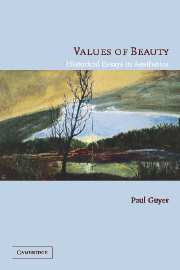Book contents
12 - From Jupiter's Eagle to Warhol's Boxes
The Concept of Art from Kant to Danto
Published online by Cambridge University Press: 05 June 2012
Summary
In a recent book, Arthur Danto declares that he is both an “essentialist” and “an historicist in the philosophy of art” and claims that his essentialism has been as deep-seated as his historicism: “Now I would have taken the entire burden of … The Transfiguration of the Commonplace, to have been to underwrite essentialism in the philosophy of art, since that book takes as its program a definition of art which pretty much implies that there is, after all, a fixed and universal identity.” Danto thinks he needs to make this explicit in response to the perception of him as an antiessentialist, someone who does not think there can be a single definition that can subtend the whole extension of what we now mean by the word “art” (and its equivalents in modern languages other than English). Indeed it may seem surprising that someone who has argued convincingly that objects can rightly be classified as art now that couldn't even have been conceived as art at an earlier time, while projects that at one time may have seemed the very essence of art, such as illusionistic painting and subsequently abstract painting, may have come to an end, could at the same time believe that there is a “fixed and uniform identity” or single definition of art that remains constant through all that change.
- Type
- Chapter
- Information
- Values of BeautyHistorical Essays in Aesthetics, pp. 289 - 325Publisher: Cambridge University PressPrint publication year: 2005

